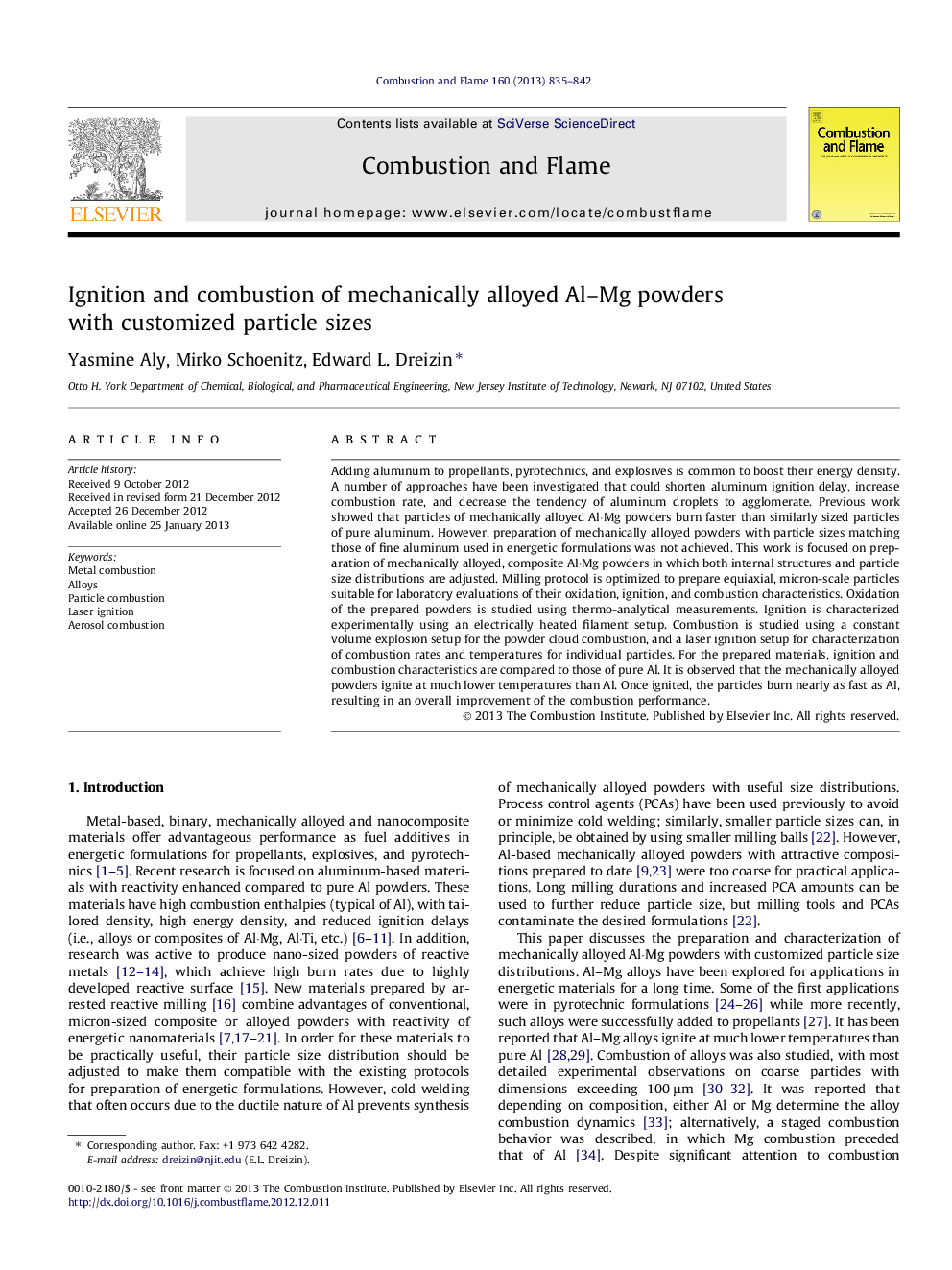| Article ID | Journal | Published Year | Pages | File Type |
|---|---|---|---|---|
| 168955 | Combustion and Flame | 2013 | 8 Pages |
Adding aluminum to propellants, pyrotechnics, and explosives is common to boost their energy density. A number of approaches have been investigated that could shorten aluminum ignition delay, increase combustion rate, and decrease the tendency of aluminum droplets to agglomerate. Previous work showed that particles of mechanically alloyed Al·Mg powders burn faster than similarly sized particles of pure aluminum. However, preparation of mechanically alloyed powders with particle sizes matching those of fine aluminum used in energetic formulations was not achieved. This work is focused on preparation of mechanically alloyed, composite Al·Mg powders in which both internal structures and particle size distributions are adjusted. Milling protocol is optimized to prepare equiaxial, micron-scale particles suitable for laboratory evaluations of their oxidation, ignition, and combustion characteristics. Oxidation of the prepared powders is studied using thermo-analytical measurements. Ignition is characterized experimentally using an electrically heated filament setup. Combustion is studied using a constant volume explosion setup for the powder cloud combustion, and a laser ignition setup for characterization of combustion rates and temperatures for individual particles. For the prepared materials, ignition and combustion characteristics are compared to those of pure Al. It is observed that the mechanically alloyed powders ignite at much lower temperatures than Al. Once ignited, the particles burn nearly as fast as Al, resulting in an overall improvement of the combustion performance.
